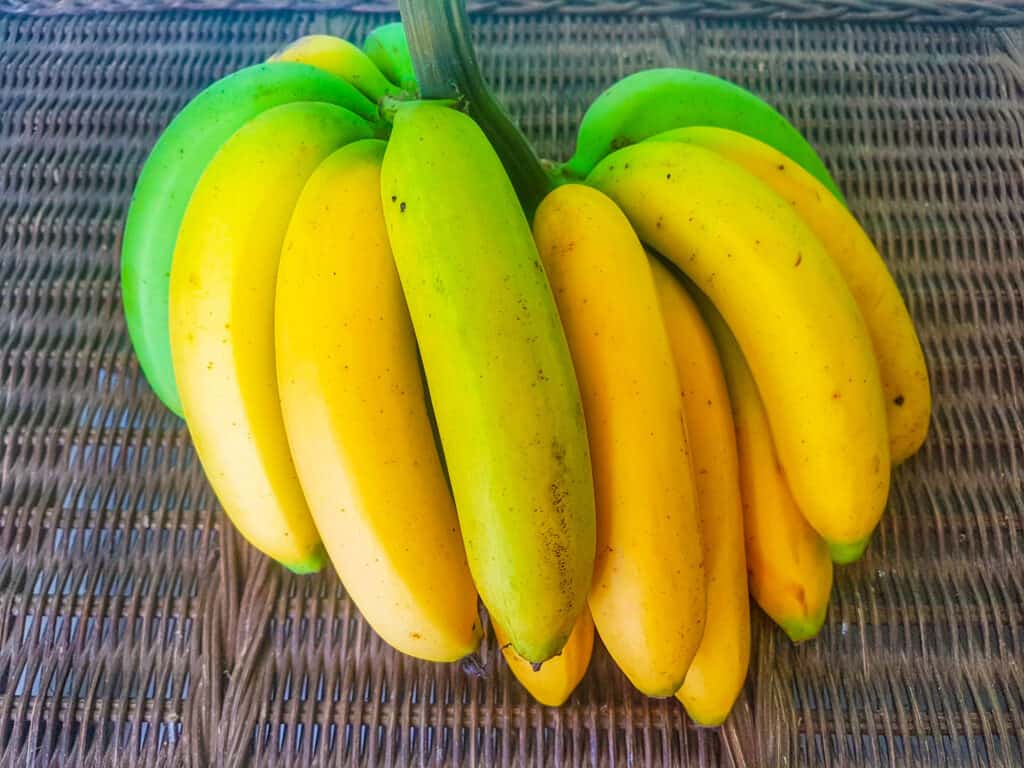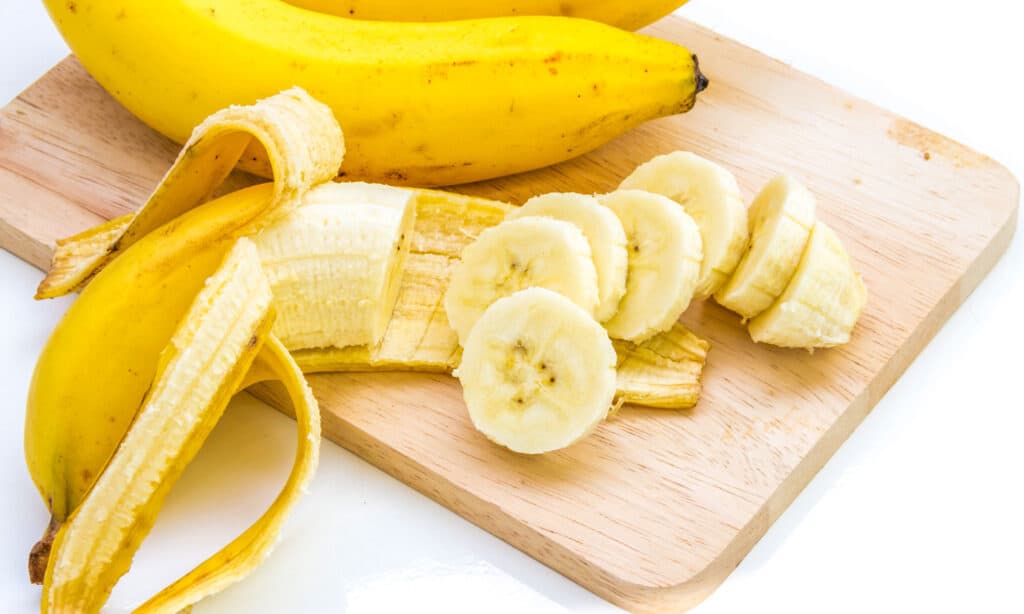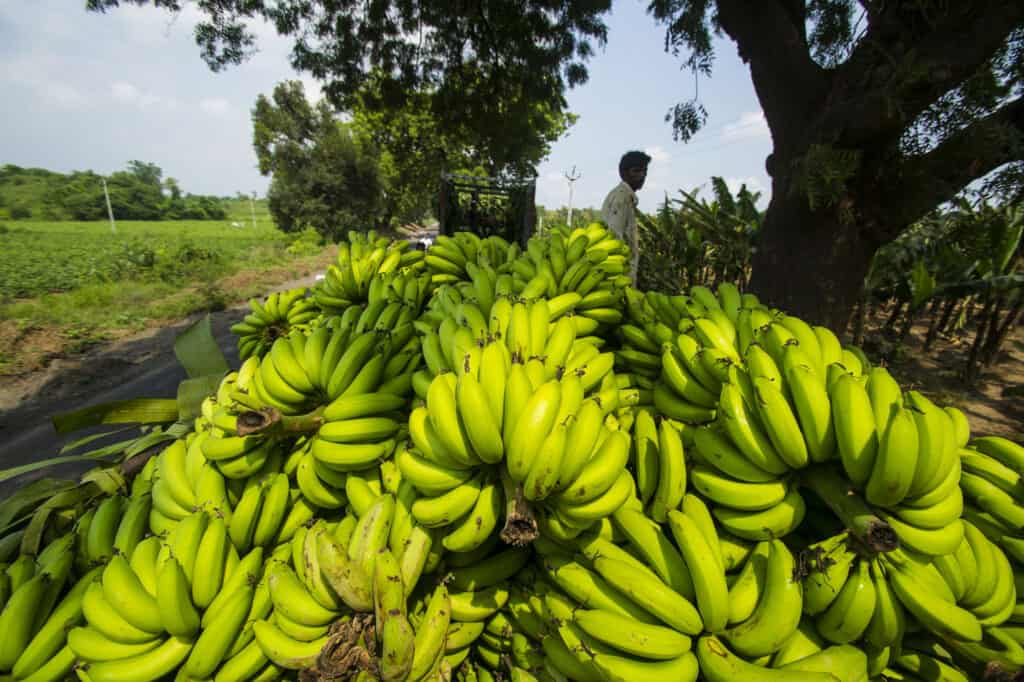The banana is the most popular fruit in the world, along with its relative, the plantain. After all, bananas are delicious and sweet; how can we not love them? It’s hard to resist the sweet and filling taste of bananas! There is, however, some bad news looming on the horizon for banana lovers. Could it be possible that bananas are going extinct?
The Cavendish is the most common and abundant type of banana currently on the market. There was a time, however, when most bananas were Gros Michel type. However, by the early 1960s, they had all been replaced by the Cavendish. This is the banana we know and love today.
So, where did this great banana switch come from, and why did it happen? And what is the possibility that bananas are going extinct? Let’s explore the history of our beloved banana and why scientists believe that it could be going extinct.
The History Of The Gros Michel Banana (The Original Banana)

A sweet, creamy variety from Latin America called Gros Michel was the world’s most popular banana in the mid-1900s.
©KRP879/Shutterstock.com
During the 1830s, bananas were shipped from the Caribbean to U.S. ports. As a result of better transportation modes, the food that was once exclusive became far more accessible. Until the late 1950s, Gros Michel bananas were the main banana variety sold in the United States, and their creamy texture and sweet flavor made them popular among banana lovers.
In fact, the Gros Michel bananas popularized bananas being consumed in areas where they could not be grown, and they played a big role in early international trade. Its thick skin prevented them from spoiling/bruising for long periods, allowing them to be exported around the globe until the early 20th century, boosting economies in several countries.
However, disaster would soon strike this delicious fruit! A fungus called Panama disease caused banana plants to wilt in the late 1800s. The fungus was named for its first major devastation in Panama, but it also devastated banana crops in Honduras, Suriname, and Costa Rica. Thousands of banana plantations were devastated by Panama disease, Race 1. Replanting banana trees on these infested soils was not possible.
As a result, bananas became extinct for the first time. That was when the Cavendish banana made its way into our grocery shelves and hearts!
The Cavendish Banana Reigns Supreme

Currently, the Cavendish is the only yellow banana variety mass-produced globally.
©Monning27/Shutterstock.com
As the Panama disease continued to spread, it created widespread crop failure. This meant that the original Gros Michel banana needed to be replaced. As a result, the Gros Michel banana was replaced with the Cavendish banana, which is more disease-resistant. The Cavendish banana is the one you will find in grocery stores today. The Gros Michel banana was slightly thicker, straighter, and sweeter than the Cavendish banana.
Today, the Cavendish banana makes up 99% of banana exports. To save the banana industry, breeders began mass producing the asexually bred Cavendish. However, they appeared unaware that history was about to repeat itself. Similar to the Gros Michel banana, the Cavendish is facing extinction, and this is due to the lack of genetic diversity in Cavendish bananas. Each banana is essentially a clone of the other. We are experiencing this phenomenon due to monoculture, widespread practice in many farming industries.
What Is Monoculture Farming & Why Is It Used?

The banana plant is actually a herb, not a tree or palm.
©CRS PHOTO/Shutterstock.com
In agriculture, monoculture farming involves growing only one type of crop at a time in a specific field. Monocultures are popular among industrial farmers because they help all crops grow similarly with minimal differences. This is critical for large-scale operations like growing bananas and shipping them out. This is because large Cavendish banana plantations are easier to spray with pesticides in mass quantities.
So what is the problem with monoculture farming? The production of monoculture crops is based on cloning rather than seeds. As a result, the crops are less able to fight off pathogens. When bananas are grown in monocultures, they are all at risk if a segment becomes infected with a disease. The same disease, fungus, or pest that kills one plant can kill all of them. This is exactly how the original Gros Michel banana went extinct. Monoculture farming is now causing the Cavendish banana to suffer from the same problem.
The genetic diversity in seeds produces a more irregular product but is also more resistant to disease. Because bananas are all clones, they are consistent in their flavor, predictable in how they ripen and turn the same color when ready to eat. However, those traits also make them a lot more vulnerable to disease.
The Cavendish Banana and Its Possible Extinction
So are bananas going extinct? It turns out that Tropical Race 4 (TR4), a newer strain of Panama Disease, has recently popped up. A banana plant with this disease dies from the bottom up, affecting its vascular system and preventing it from getting water. The banana industry could be wiped out if Tropical Race 4 isn’t stopped.
As a result of the current climate crisis, the Cavendish is suffering from this disease in full force. Black Sigatoka spreads more easily as temperatures rise and the weather becomes wetter in banana plantations. This disease is caused by a fungus and dates back to the 1900s. There is sadly no pesticide or other treatment that can stop Panama disease as of yet. So how can the banana be saved from extinction?
Well, several different options are currently being considered.
Saving The Banana From Extinction
As you can see, only the Gros Michel and the Cavendish made the manufacturing cut out of over 1,000 banana types worldwide. There are several reasons for this. Compared with other banana types, these two had the lowest shipping cost. They also had a longer shelf life as they didn’t bruise easily and had tough skin. On top of all of that, they also tasted great!
Moreover, many consumers feel comfortable purchasing these bananas because they are familiar with them. However, many other banana types are resistant to the TR4 disease. New banana mapping technology may allow researchers to examine the genetic makeup of other banana varieties for a TR4-resistant trait to add to the Cavendish.
Alternatively, bananas can be intercropped with other plants, or fewer bananas can be planted per plantation. Disease resistance can increase by reducing the number of disease-prone plants on a plot of land.
The photo featured at the top of this post is © Yuri Dondish/Shutterstock.com
Thank you for reading! Have some feedback for us? Contact the AZ Animals editorial team.






